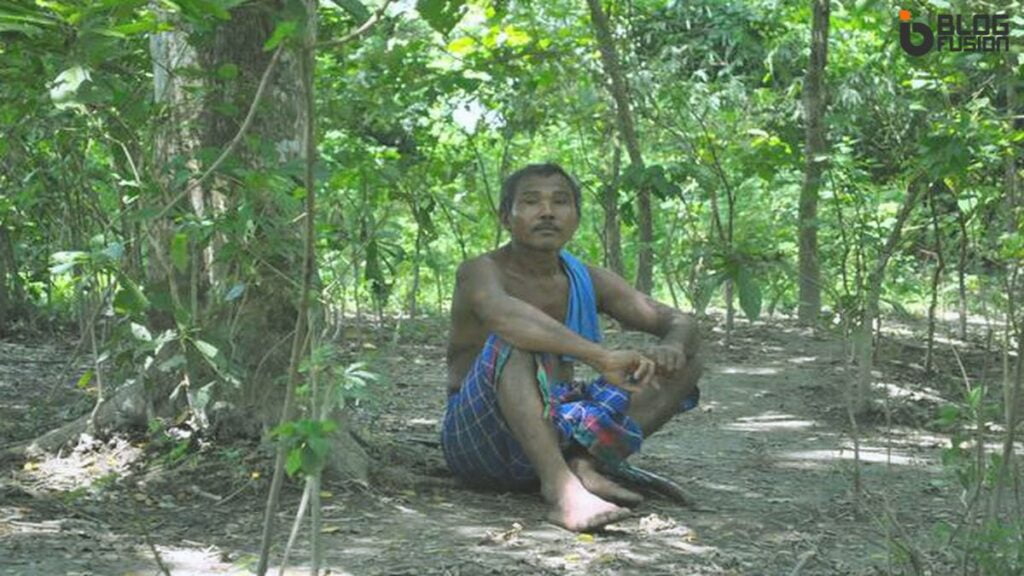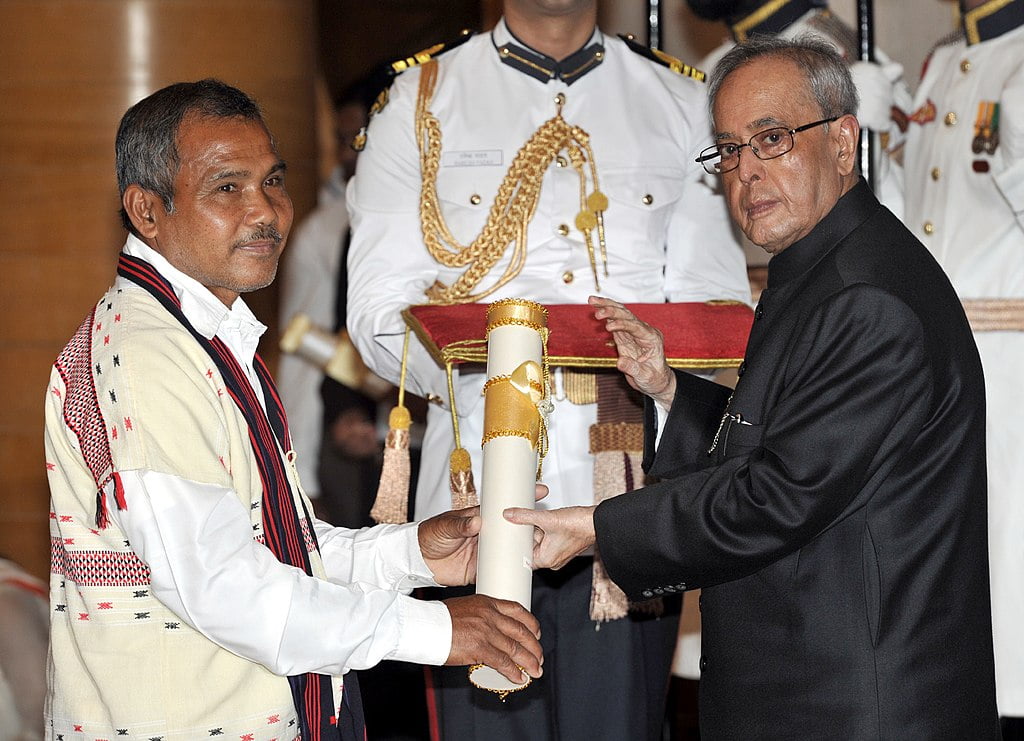Jadav Payeng, also known as the Forest Man of India, is an environmental activist and forestry worker from Majuli. His remarkable story has inspired people around the world. He gained widespread recognition for single-handedly transforming a barren sandbar on the Brahmaputra River into a thriving forest ecosystem over several decades.

Personal Life
Jadav Payeng, the Forest Man of India, has dedicated his life to the environment. Let’s delve into his personal story:
- Early Life: He was born in the Mishing community in the Jorhat district of Assam, India. He grew up in a rural environment and had a deep connection to nature from a young age.
- Education: Payeng’s formal education background is not extensively documented, but it’s known that he received at least a basic education. He started his afforestation efforts in his early teenage years.
- Family Life: Payeng is married and has children. He has lived with his family in the vicinity of the forest he created on the sandbar of the Brahmaputra River.
- Occupation: Jadav Payeng’s passion lies in environmental activism and conservation. However, to support his family, he has necessarily taken on various other activities. These include working as a farmer and occasionally as a laborer.

Planting a forest in India
- Inspiration and Initial Planting:
- In 1979, Jadav encountered a heartbreaking sight: a large number of dead snakes on a tree-less sandbar. These snakes had perished due to excessive heat after floods washed them onto the barren land.
- Jadav began by planting a single bamboo sapling on the sandbar. This was the first step in a long and arduous journey.
- Driven by compassion and a desire for change, Jadav planted around 20 bamboo seedlings on that very sandbar. But he didn’t stop there.
- He returned every day, rain or shine, to plant another sapling. He reportedly aimed for a new sapling each day, but the exact number might have varied.
- He prioritized readily available native species like bamboo, cotton trees, and medicinal plants, ensuring the forest thrived within its natural environment.
- Dedication and Persistence:
- Jadav continued to nurture and plant trees over the next several decades. His relentless efforts transformed the once desolate area into a lush green forest.
- The forest, now known as the Molai Forest, Jadav’s efforts transformed a barren sandbar along the Brahmaputra River into the lush Molai Forest covers approximately 1,360 acres (550 hectares) near Kokilamukh in Jorhat, Assam, India.
- Molai Forest is home to an incredible variety of wildlife, including Bengal tigers, Indian rhinoceros, deer, rabbits, and numerous bird species, including a large population of vultures.
- Tree Varieties and Bamboo Coverage:
- Within Molai Forest, there are several thousand trees, including species like valcol, arjun, ejar, goldmohur, koroi, moj, and himolu.
- Additionally, bamboo covers over 300 hectares of the forest.
- Elephant Visitors:
- A herd of around 100 elephants visits the Molai Forest annually, staying for approximately six months. Over the years, these elephants have even given birth to 10 calves within the forest.
The Legacy: Molai Forest
- Jadav’s decades of dedication resulted in the creation of a massive forest reserve named after him – the Molai Forest.
- Today, the Molai Forest spans over 1,360 acres, a testament to Jadav’s perseverance. It shelters a plethora of plant and animal life, serving as a crucial habitat for endangered species.
- The forest also plays a vital role in protecting the nearby Majuli Island, the world’s largest river island, by acting as a natural barrier against erosion.
Awards and recognition for Jadav Payeng
Payeng’s work has brought him significant recognition and accolades, including national and international awards. These include the Padma Shri, India’s fourth-highest civilian award, conferred upon him by the Government of India in 2015.

Jadav Payeng’s story is an inspiration for all. It’s a reminder that one person with a vision and unwavering commitment can make a significant impact on the environment. The Molai Forest stands as a testament to the power of individual action and serves as a beacon of hope for a greener future.
Read Also
- Mawlynnong: Asia’s Cleanest Village
- Duckweed-Based Wastewater Treatment Systems
- Umngot River: Meghalaya’s Crystal-Clear Gem
- Turn Your Passion for Green Living into Profits
- Sikkim Wins Best State Award for Environment Education
- Rajendra Singh: The Waterman of India
- NGOs SHGs and Social Movements in Maharashtra
- Zero Waste Lifestyle Tips: Dive into a Sustainable Future
- How Do Indigenous cohorts Live in the Amazon Rainforest?
- Fungi: The Unsung Heroes in the Fight Against Plastic Pollution
- Drylands: The Vital Lifeline for Over 2 Billion People

EOS- BUILDING TRUST Ripple Paper Non-Slip Cups with Leak Proof
ECO-FRIENDLY: Crafted from 100% paper, these cups are nature-friendly and recyclable, helping you reduce your environmental footprint.
MATERIAL & CAPACITY: These multicolor cups are made from paper and have a capacity of 200 ml. They come in a pack of 150.
FREEZER SAFE: These cups can be safely stored in the freezer, making them suitable for a variety of drinks and treats.
Frequently Asked Questions (FAQs)
A. Jadav Payeng is an environmentalist from Assam, India, known for transforming a barren sandbar into a thriving forest over four decades. His relentless efforts in planting trees have resulted in the creation of the Molai Forest, a dense 1,360-acre woodland. This remarkable achievement earned him the title “Forest Man of India.”
A. In 1979, Jadav Payeng witnessed the deaths of numerous snakes on a barren sandbar in the Brahmaputra River due to extreme heat and lack of vegetation. Deeply affected, he decided to plant trees to revive the land and provide a habitat for wildlife.
A. Jadav Payeng faced significant challenges, including:
Lack of initial support and resources.
Harsh environmental conditions on the barren sandbar.
Threats from human encroachment and deforestation.
Despite these obstacles, his unwavering dedication helped him succeed.
A. The Molai Forest is now a rich ecosystem that:
Supports diverse flora and fauna, including elephants, tigers, rhinos, and birds.
Prevents soil erosion and combats desertification.
Serves as a natural carbon sink, contributing to climate change mitigation.
A. Jadav Payeng has received numerous accolades, including:
Padma Shri in 2015, one of India’s highest civilian honors.
International recognition for his contributions to environmental conservation.
Inspiring countless individuals globally to take up afforestation and conservation initiatives.






I don’t think the title of your article matches the content lol. Just kidding, mainly because I had some doubts after reading the article.
Thank you for your sharing. I am worried that I lack creative ideas. It is your article that makes me full of hope. Thank you. But, I have a question, can you help me?